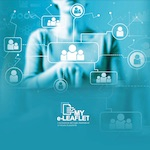AFI project to address digital Information Leaflet challenge
The Italian Pharmaceutical Industry Association has launched a project to look at the evolution towards a Patient-friendly digital Patient Information Leaflet
AFI recently launched a project titled "My e-Leaflet, the evolution towards a Patient-friendly Information Leaflet".

The project aims not only to identify and analyse the criticalities related to the Information Leaflet in its current paper-based form, but also to explore the opportunities that new digital technologies can offer in order to improve therapy management through greater usability and accessibility to official and updated information medicinal.
The aim of the project is to work towards an industry-led Consensus Document on the digitization of the Patient Information Leaflet.
In the meantime, on the other side of the pond, a US-based, industry-led initiative was started with the name of ANPI to advance regulatory or legislative reforms to facilitate the dissemination of FDA-approved pharmaceutical labelling information via modern digital platforms (which is basically what the eLeaflet is about).
It is not entirely a coincidence that two different associations, on opposite sides of the Atlantic, both backed by the pharmaceutical industry are looking at evaluating the impact and requirements of a digital transformation process that aims at replacing the paper leaflet with a more advanced, fully digital solution.
The advantages of a digital solution are too many to be ignored and are also ubiquitous meaning that all parties involved gain something by going digital:
-
Enhanced patient safety : better readability and searchability, faster sharing of new information, customizable information.
-
Saving resources: every year, millions of paper inserts are discarded without even being viewed. The elimination of paper and reduction of package sizes also advances many efforts globally to reduce our overall environmental impact.
-
Reducing burdens: when there is a labelling change, resources are required to ensure quality control, review graphic design, proofread, and conduct final release of the printed labelling. In some regions, packs are destroyed in order to implement labelling changes within a legally prescribed timeline, adding to the waste. The changes are included in th3 packaging and reach the market on average 6 months after approval.
While both initiatives look at the transformation of the paper Patient Leaflet into a digital eLeaflet their approach is somewhat different:
-
AFI has kicked off the project with a patient survey. Since the FI is a document aimed exclusively at the citizen/patient, the AFI Working Group has decided to start, for the necessary investigations, from the opinion that Italians have of this information tool. Some of the questions were directed at the current paper solution others at its potential evolution into a digital tool.
-
ANPI on the other side, approached the investigation from a healthcare professionals and industry perspective.
The main challenges for them are:
- reaching common global structured product labelling standards for labelling information
- ensuring the electronic label is accepted as the authoritative source of approved information and supersedes any paper-based documentation
- ensuring access to electronic media
- harmonize varying regulatory approaches to e-labelling
- creation of authoritative portals to deliver the eLeaflet solution in each country
- eliminate the requirement of paper labels to accompany the package.
Interestingly enough parties on both sides agree and both reach similar conclusions: implementing a digital solution makes a lot of sense for the industry, healthcare professionals and for patients.
Notes
AFI (Associazione Farmaceutici Industria) is the Italian Association of Pharmaceutical Industry and is responsible, among other things, for implementing training and information initiatives for new disciplines and emerging trends. among the stakeholder we find: Boehringer-Ingelheim Italia, Amgen, Chiesi Farmaceutici, Novartis Farma, Accord Healthcare Italia, Bayer and Roche.
ANPI (Alliance to Modernize Prescription Information) is US based, and is a group of pharmaceutical stakeholders with a common interest in advancing regulatory or legislative reforms to facilitate the dissemination of FDA-approved pharmaceutical labelling information via modern digital platforms, not surprisingly within this group of stakeholders we find the likes of AbbVie, Amerisource Bergen, Johnson and Johnson, Merck, Bristol Myers Squibb, Viatris, Pfizer, Teva, Fresenius Kabi.
More information about the eLeaflet solution from myHealthbox is available on the eLeaflet website